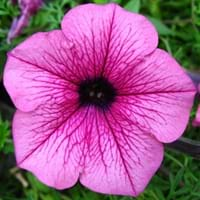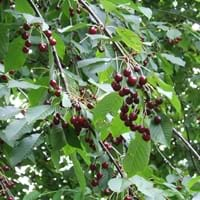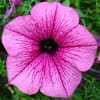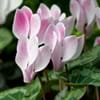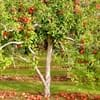Life Span
Annual
Perennial
Type
Flowering Plants, Shrubs
Fruit
Origin
South America
Hybrid origin, Europe, Asia
Types
Grandiflora Petunias, Multiflora Petunias, Wave Petunias, Superbell Petunias, Supertunia Petunias
Fruit
Habitat
Terrestrial
Temperate Regions
USDA Hardiness Zone
9-10
4-8
AHS Heat Zone
Not Available
8-1
Sunset Zone
not provided
A2, A3, 1a, 1b, 2a, 2b, 3a, 3b, 4, 5, 6, 7, 8, 9, 14, 15, 16, 17
Habit
Not Available
Upright/Erect
Flower Color
Blue, Pink, Purple, Red, White, Yellow
White
Flower Color Modifier
Not Available
Bicolor
Fruit Color
Not Available
Red, Dark Red
Leaf Color in Spring
Golden Green
Dark Green
Leaf Color in Summer
Green
Dark Green
Leaf Color in Fall
Green
Dark Green
Leaf Color in Winter
Green
Light Green
Leaf Shape
Ovate
Simple lobed or unlobed
Plant Season
Summer
Spring, Summer, Fall
Sunlight
Full Sun, Partial shade
Full Sun, Partial Sun
Type of Soil
Loamy, Sandy
Clay, Loam, Sand
The pH of Soil
Neutral
Acidic, Neutral, Alkaline
Soil Drainage
Well drained
Well drained
Bloom Time
Fall, Spring, Summer
Spring
Tolerances
Pollution
Drought
Where to Plant?
Container, Ground, Pot
Ground
How to Plant?
Seedlings, Transplanting
Semi-hardwood and hardwood cuttings
Plant Maintenance
Medium
Medium
Watering Requirements
Keep the ground moist but not water-logged, Requires regular watering, Requires watering in the growing season
Keep ground moist, Use Mulches to help prevent water loss during hot and windy weather
In Summer
Lots of watering
Lots of watering
In Spring
Moderate
Moderate
In Winter
Average Water
Average Water
Soil pH
Neutral
Acidic, Neutral, Alkaline
Soil Type
Loamy, Sandy
Clay, Loam, Sand
Soil Drainage Capacity
Well drained
Well drained
Sun Exposure
Full Sun, Partial shade
Full Sun, Partial Sun
Pruning
Cut or pinch the stems, Do not prune during shooting season, Remove dead or diseased plant parts, Remove deadheads
Remove damaged leaves, Remove dead branches, Remove dead leaves
Fertilizers
All-Purpose Liquid Fertilizer
All-Purpose Liquid Fertilizer
Pests and Diseases
Aphids, Bacterial Blight, Caterpillars, Gray mold, Leaf spot, Powdery mildew, Root rot, Spider mites, Thripes, Verticillium Wilt, Viruses
Birds
Plant Tolerance
Drought
Drought
Flower Petal Number
Not Available
Single, Double
Fragrant Bark/Stem
Yes
No
Foliage Texture
Medium
Medium
Foliage Sheen
Matte
Glossy
Attracts
Butterflies, Hummingbirds
Birds
Allergy
Not Available
Anaphylaxis, gastro-intestinal problems, Itchiness, Skin irritation
Aesthetic Uses
Beautification, Bouquets, Showy Purposes
Beautification, Bouquets, Informal Hedge, Landscape Designing, Showy Purposes, Wild gardens
Beauty Benefits
Not Available
Not Available
Environmental Uses
Air purification
Air purification
Medicinal Uses
Not Available
anti-inflammatory, Anti-oxidant, Gout, Insomnia, Soothing and relieving pain
Part of Plant Used
Flowers
Flowers, Fruits
Other Uses
Showy Purposes
Air freshner, Beneficial species for attracting pollinators, Cake, Edible syrup, Oil is used in perfume, soaps, creams, etc., Used to make juice
Used As Indoor Plant
Yes
No
Used As Outdoor Plant
Yes
Yes
Garden Design
Bedding Plant, Container, Edging
Edible, Feature Plant, Fruit / Fruit Tree
Botanical Name
Petunia
PRUNUS cerasus 'Northstar'
Common Name
Petunia
Northstar Tart Cherry, Pie Cherry 'Northstar'
In German
Petunie
Northstar Tart Cherry
In French
Pétunia
Northstar Tart Cherry
In Spanish
Petunia
Cereza
In Greek
πετούνια
Northstar Tart Cherry
In Portuguese
Petúnia
Northstar Tart Cherry
In Polish
Petunia
Northstar Tart Cherry
In Latin
Petunia
Northstar Tart Cherry
Phylum
Streptophyta
Magnoliophyta
Class
Magnoliopsida
Magnoliopsida
Family
Solanaceae
Rosaceae
Clade
Angiosperms, Asterids, Eudicots
Angiosperms, Eudicots, Rosids
Tribe
Not Available
Not Available
Subfamily
Petunioideae
Not Available
Number of Species
Not Available
Season and Care of Petunia and Northstar Tart Cherry
Season and care of Petunia and Northstar Tart Cherry is important to know. While considering everything about Petunia and Northstar Tart Cherry Care, growing season is an essential factor. Petunia season is Summer and Northstar Tart Cherry season is Summer. The type of soil for Petunia is Loamy, Sandy and for Northstar Tart Cherry is Clay, Loam, Sand while the PH of soil for Petunia is Neutral and for Northstar Tart Cherry is Acidic, Neutral, Alkaline.
Petunia and Northstar Tart Cherry Physical Information
Petunia and Northstar Tart Cherry physical information is very important for comparison. Petunia height is 5.00 cm and width 2.50 cm whereas Northstar Tart Cherry height is 180.00 cm and width 240.00 cm. The color specification of Petunia and Northstar Tart Cherry are as follows:
Petunia flower color: Blue, Pink, Purple, Red, White and Yellow
Petunia leaf color: Golden Green
Northstar Tart Cherry flower color: White
- Northstar Tart Cherry leaf color: Dark Green
Care of Petunia and Northstar Tart Cherry
Care of Petunia and Northstar Tart Cherry include pruning, fertilizers, watering etc. Petunia pruning is done Cut or pinch the stems, Do not prune during shooting season, Remove dead or diseased plant parts and Remove deadheads and Northstar Tart Cherry pruning is done Remove damaged leaves, Remove dead branches and Remove dead leaves. In summer Petunia needs Lots of watering and in winter, it needs Average Water. Whereas, in summer Northstar Tart Cherry needs Lots of watering and in winter, it needs Average Water.
